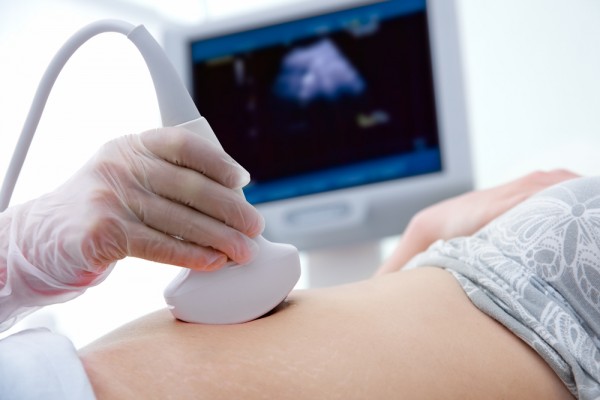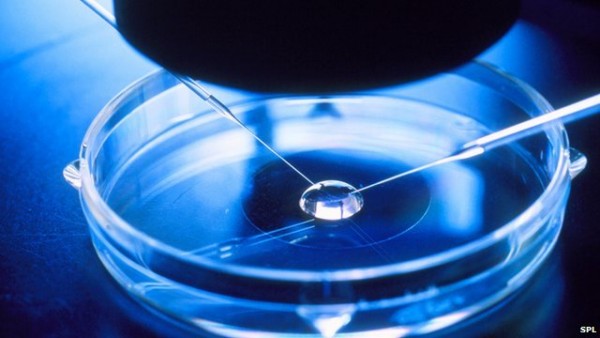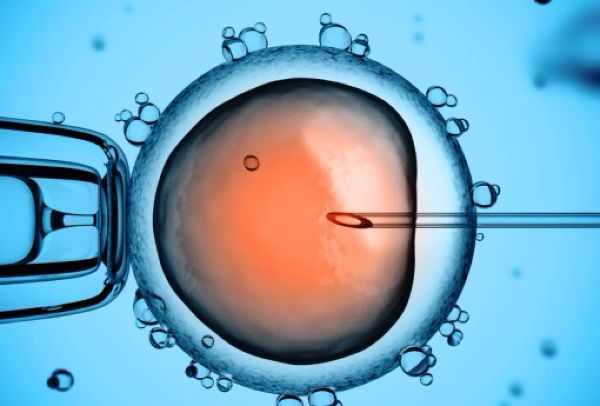
Have you ever wondered what happens behind the scenes in an IVF lab?
If you are lucky enough never to have set foot in a fertility clinic, then the likelihood is that you have no comprehension of what IVF involves. In the movies, a red-faced man is sent into a tiny room with a cup by a giggling nurse, and then his wife gets pregnant! This was as much as I knew about IVF a little over 10 years ago. I was a student in UCD, finishing up my PhD, and I had no idea what the future had in store.
Off I went to become an Embryologist and, boy, did I start at the deep end. I started in Liverpool Women’s Hospital, the largest NHS funded IVF centre in the UK at the time. They performed over 1,200 cycles of IVF every year (this is a huge amount!). I will never forget my first week there. It was an induction week, so I had to follow a nurse and a consultant around every day as they went about their normal daily tasks. I saw for the first time what couples go through in the hope of having a baby. I saw the tears, the sadness, the joy, the desperation. It was an emotional rollercoaster for me, and I wondered how do these amazing people do this job every day? But more importantly how do these couples do it!

It was overwhelming for me experiencing what these couples were going through. First of all, the endless blood tests, the scans and tests trying to figure out what was going wrong. The absolute invasion of privacy into every aspect of their sex-life - when did your last period start? How heavy was the bleeding? How many times did you have sex last month, on what dates? Do you have any problems performing or ejaculating? The list went on and on.
Some were accepting of the situation while others were teary eyed and embarrassed, but they knew it had to be done if there was any hope of figuring out what was going on. When a problem was identified, it was a welcome relief to some, but utter devastation to others. Telling a man or a woman that they are infertile is not an easy task. Even now, I still get that horrible feeling in the pit of my stomach when I start doing a semen analysis only to realise there are no sperm in the sample. I know I'm about to destroy someone’s hopes and dreams of having a baby and that's something you never get used to.
After all of the tests and investigations are complete comes the reality of IVF and the introduction of me, the Embryologist. This process is probably the biggest emotional rollercoaster for couples because, at last, they have a realistic hope of becoming pregnant. Everyone starts out on their first IVF cycle with enthusiasm and optimism, even the daily hormone injections and internal scans don't seem to matter because the end result will be worth it.

An IVF cycle usually starts on the first day of a woman’s period. After 10 to 12 days of hormone injections the woman attends the fertility clinic for a procedure called an 'Egg Collection'. Yes, this is exactly as it sounds, her eggs are collected (removed from her ovaries). The exact process of how this is done is not for the squeamish but this marks the first stage of the lab part of the IVF process.
Inside the IVF lab: Meet the Embryologists
An IVF lab is a controlled, clean-room area, meaning that nobody is allowed inside only the lab staff. High standards of air-quality are maintained by air-handling systems which filter and pressurise the air inside the lab. Everything in the lab is designed to mimic the natural environment of the uterus (womb). Even the lights are turned down because embryos are never exposed to light in their natural environment.
As an Embryologist, the first task of the day is to check that everything is working properly. All of the equipment is connected to sensors that will alert us if anything goes wrong, but we still perform a manual check of all equipment every day. Over the course of the past 10 years, the amount of equipment in the IVF lab has grown exponentially. Every few months there is a new incubator on the market or piece of equipment claiming to be better than the rest. There are now incubators with tiny little cameras inside that take photos of each embryo every few minutes. Some incubators will even predict the best quality embryos.

My favourite part of the day is the morning, as this is when egg collections are performed. Before we get started, the team checks the patients ID and there is always an air of excitement and apprehension in the room. Nobody can predict what will happen next or how many eggs we will get. This is what the whole IVF cycle has been building up to. The procedure is usually quite fast and takes just 20 minutes. As soon as the egg collection procedure is completed, all of the eggs are placed into a tiny dish containing a special fluid that will keep the eggs healthy. The dish is then placed into an incubator which will be their home for the next five days.
After the eggs are collected, it’s the man’s' turn (unless a frozen sample or Donor sperm is being used). He is brought to a room to 'provide' a sperm sample. Luckily, in real-life there is a lot more dignity and privacy offered than what you see in the movies. The sperm sample is washed and separated in the lab to select out the best quality swimmers.
The next step is to join the eggs and sperm together, and there are two ways to do this: IVF or ICSI. IVF or In-Vitro fertilisation literally means fertilisation 'in-glass'. It refers to the fact that a woman’s eggs are fertilised outside of the body. To carry out IVF, the embryologist places a portion of the best swimming sperm from the man’s sample into the dish which contains the eggs. The dish is then left undisturbed in the incubator until the next morning.
ICSI or Intracytoplasmic Sperm Injection is a process whereby one sperm is injected into each egg. ICSI is generally used if there is a low sperm count. As an Embryologist, performing the ICSI procedure can be quite a daunting task. Using some very powerful microscopic equipment, you physically pick up an individual sperm and inject it into an egg. Once all of the eggs have been injected they are placed into the incubator overnight.

So what happens on that first night in the incubator?
While everyone is at home, the lab is silent and the hustle and bustle of the day is over; the eggs and sperm get to work. This is when the magic happens. In the IVF dish, millions of sperm are frantically swimming until one finally makes it into the egg. It bursts through the hard shell and causes a chemical reaction preventing any more sperm from entering. The race is over, and the rest are destined to die - their journey is over. A similar process begins in the ICSI dish. These sperm have had an easier journey as they were physically placed inside the egg by the embryologist. As soon as the egg senses the presence of the sperm a complex chemical reaction begins.
Whether the sperm got into the egg unaided (IVF) or by ICSI, everything that happens from this point onwards is the same. The sperm cell contains half of the DNA (genetic structure) required to make an baby and the egg contains the other half. Both sets of DNA find each other and fuse together.
What happens on that first night in the incubator can determine the success or failure of the cycle.
It's at this point that I always encourage couples to try to relax. Everything is out of their control now. The hard work has been done and the rest is down to nature.

With the dawn of a new day, I open the lab doors eager to find out the result of my previous day’s work. You never know what to expect which is why working as an embryologist never gets boring. As an embryologist, you are always conscious of the couple that are sitting at home, anxious and worrying waiting for you to call them. On that first morning, the results of fertilisation are revealed. The eggs are taken out of the incubator and checked under the microscope. The eggs that have successfully fertilised are separated from the rest, and these are the ones that will start to create embryos over the coming days. At this point, all of the fertilised eggs look the same, so it is still impossible to predict the outcome of the cycle. The fertilised eggs are returned to the incubator and will remain there for the next five days.
The process of IVF is a very difficult waiting game. I can only imagine how difficult it is to be the couple at home, feeling helpless, just wishing away the hours until the next day and the next phonecall from the lab. As an embryologist, you move on to the next couple, and the whole process starts again every day.
Five days after Egg Collection, the Embryo Transfer is usually planned. Embryo transfer means that the best quality embryo or embryo's are placed back into the woman’s uterus (womb) where they will hopefully implant and create a beautiful baby. As a embryologist your job is to select the best embryos based on how they have developed over the course of the past five days. By now, they should be at a stage of development called the Blastocyst Stage. This is quite an advanced stage of development and there are now thousands of cells, all of which have grown from those two cells (egg and sperm) just a few days ago.

At this point, you meet the couple again. This is usually a more relaxed affair, as the rollercoaster of the past two weeks has now come to yet another peak. The embryo transfer procedure is quick and painless. The embryos are removed from the incubator and placed into the uterus in less than two minutes, ensuring that they encounter the least possible stress. Any remaining good-quality embryos are frozen at this point. In the lab, the empty dishes are removed from the incubator, the paperwork is completed and the chart is filed away. This marks the end of the cycle from the lab point of view.
For the couple, the journey is only beginning. The chances of pregnancy are now higher than ever before, but the waiting game continues. The embryo should implant in the lining of the uterus within a few days and start to produce a hormone called B-HCG. This is the hormone detected by a pregnancy test. It will take up to two weeks for the levels of this hormone to be high enough to give a positive result. This 'two week wait' is yet another emotional heartache and is, perhaps, the toughest wait of the entire process.
Regardless of the outcome, the strength and courage of every couple that has undergone an IVF cycle is not to be underestimated. It tests every fibre of your being, and your relationship to survive the emotional turmoil involved from that very first consultation to the day you walk out of the clinic with your tiny embryo on-board.

IVF is not something that anyone enters into lightly. As a female in her mid-30's, I have lots of friends who have experienced difficulty getting pregnant. 1-in-6 couples have problems getting pregnant, so if you think about it, there is at least one couple in your close circle of friends who are struggling right now. In Ireland, there is still a huge stigma in relation to infertility. It can be very difficult to know where to turn to get accurate and honest information. The reality is that most couples won't need advanced therapies such as IVF.
This year, I set up my own fertility website www.simplyconceive.ie, which is a resource for couples starting out on their fertility journey. I want to use the knowledge and experience I have gained to help couples to increase their chances of getting pregnant by understanding their bodies and making small changes which might be the difference between success and failure. When does trying for a baby move out of the bedroom and into a clinic? I have designed a 28-Day Natural Fertility Programme which you can carry out in the privacy of your own home. It is 100 per cent natural with no medication. It relies on tried and tested techniques to help women to understand their own bodies and accurately track their cycle. There is also a home semen testing kit included in the programme, as male factor problems account for over 40 per cent of cases.
Getting the correct support and information is critically important. I am happy to offer support and information to everyone on their fertility journey, so please feel free to get in touch with me through my website (www.simplyconceive.ie) or you can follow me on Facebook or Twitter (@SimplyConceive).





